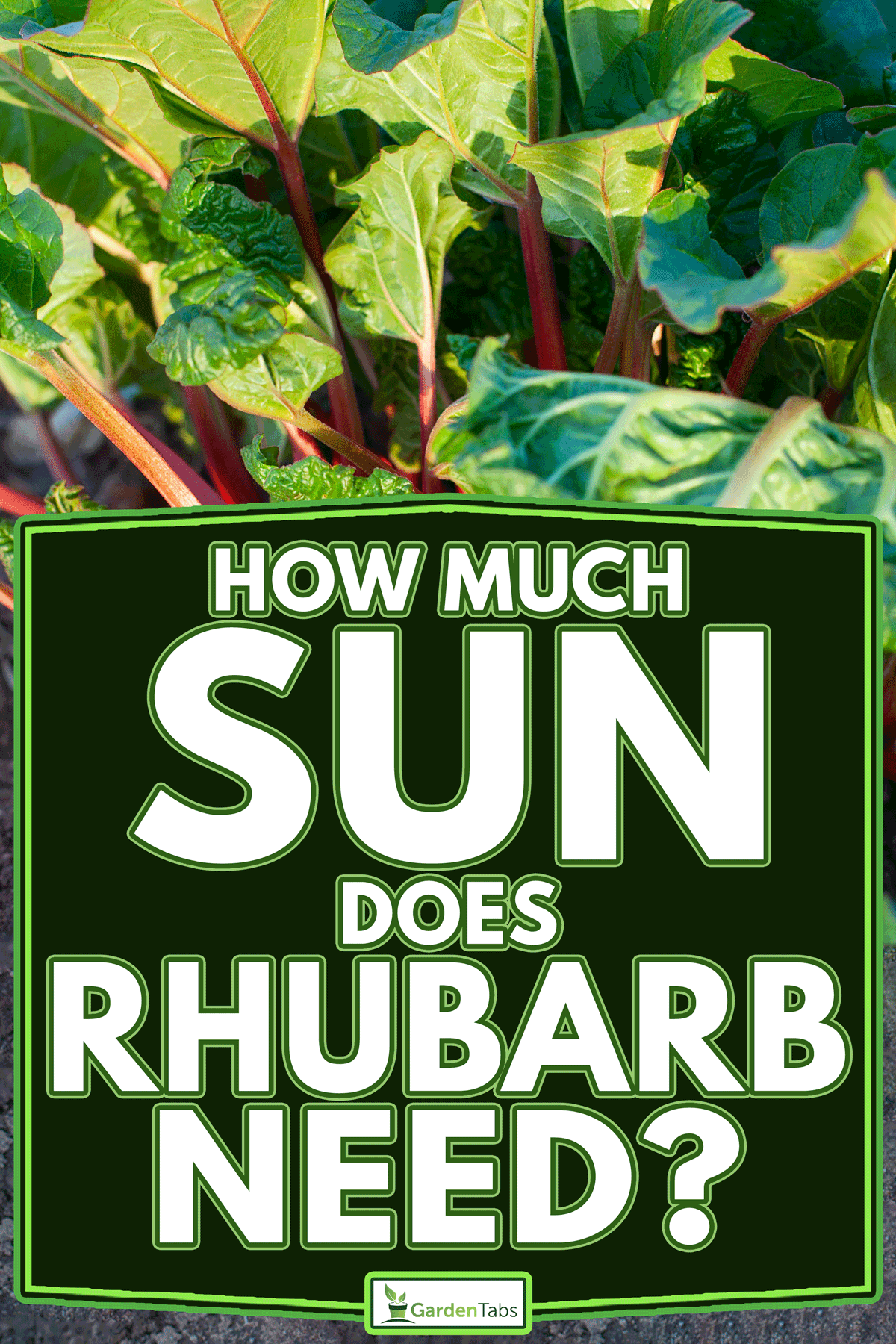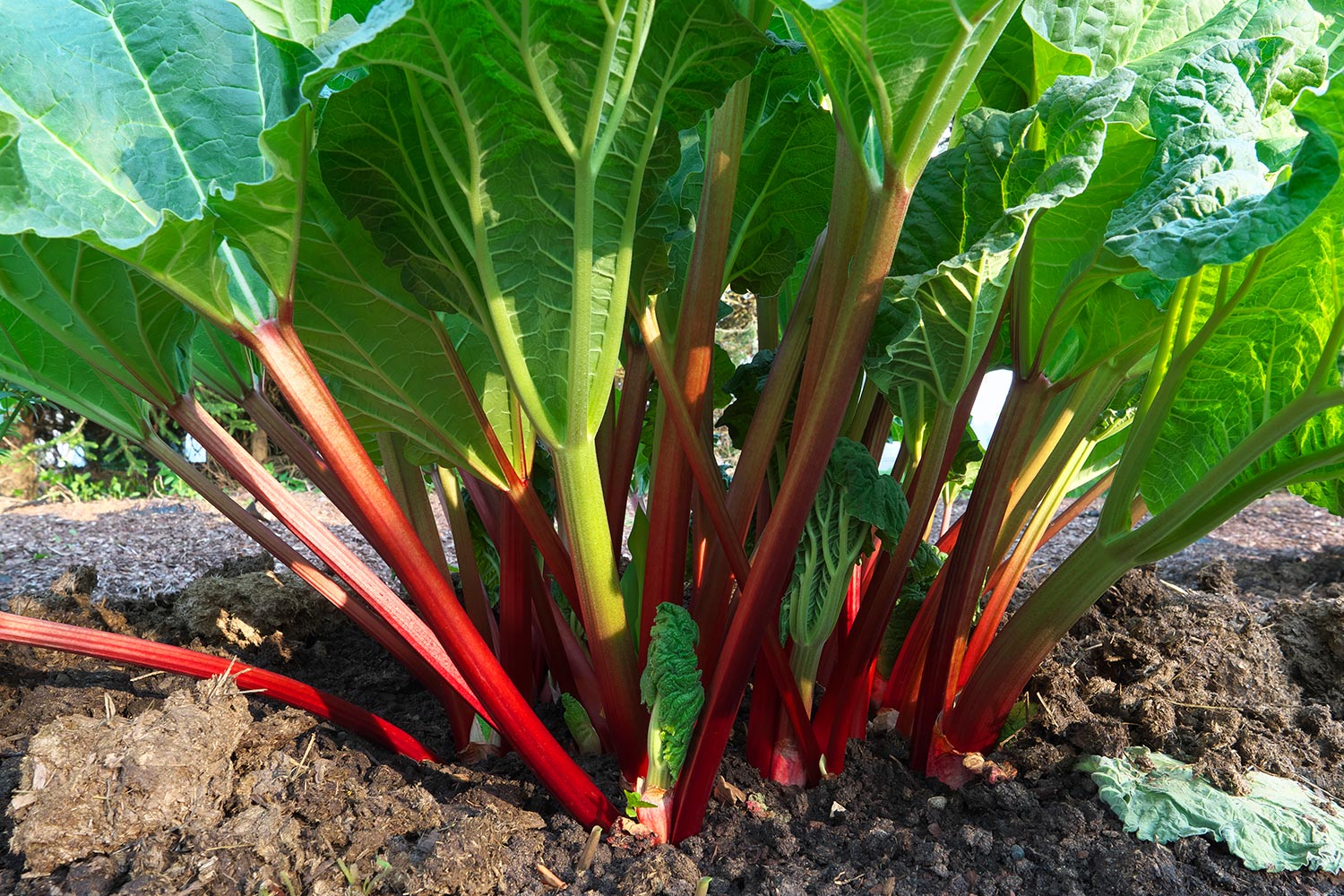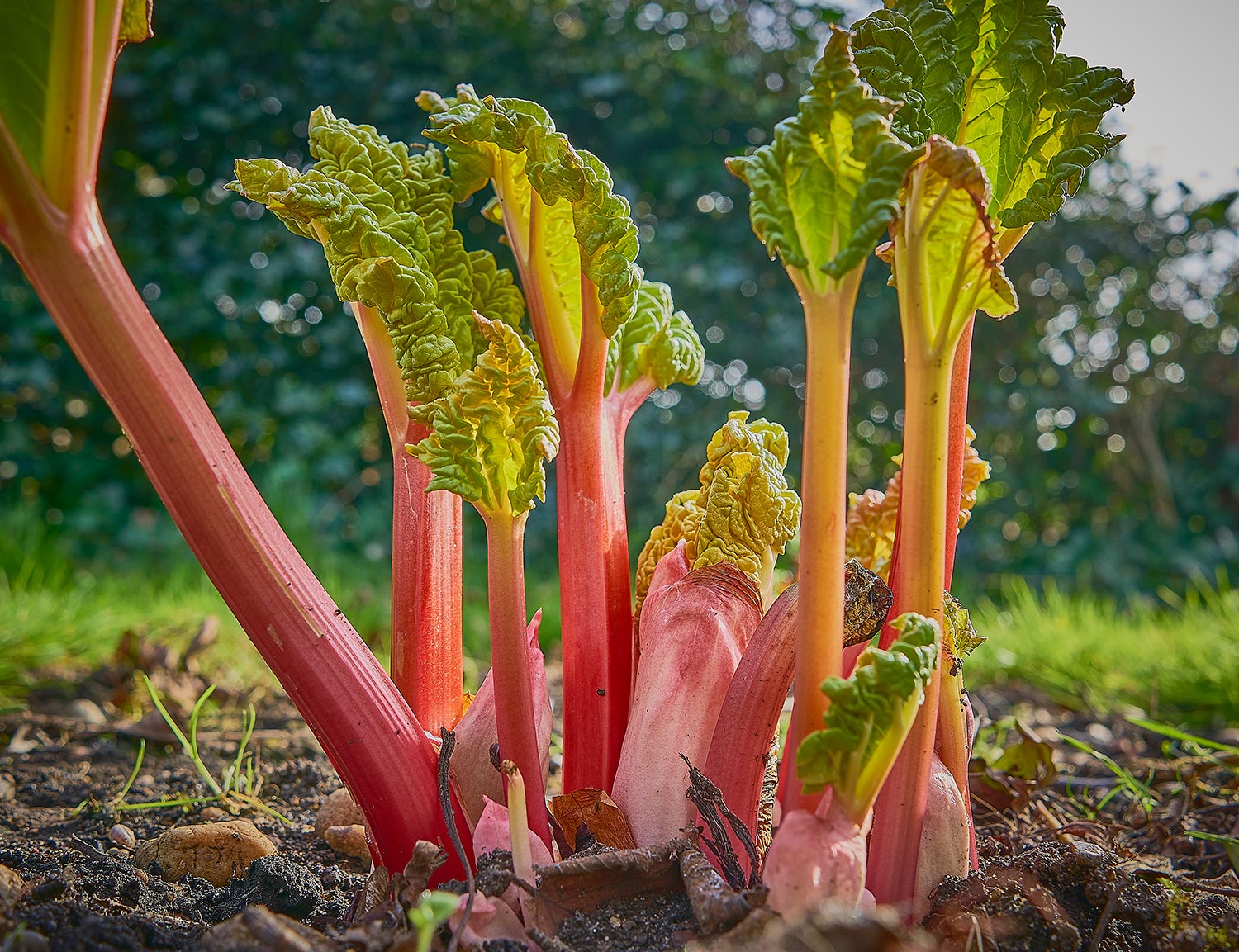Rhubarb is a wonderful vegetable treated as a fruit in various recipes. However, to get the most out of this versatile plant, you are probably wondering how much sun it needs to thrive? We asked experts for their input, and here is what we discovered about rhubarb.
Rhubarb loves a lot of sunlight and fertile, well-draining soil. However, you can have success growing rhubarb in a partially shaded area. But, avoid growing rhubarb in a space devoid of sun, under the shade of nearby trees and shrubs.
If you enjoy using rhubarb to craft delicious pies, jams, sauces, and savory dishes, you'll need to ensure it has optimal growing conditions. So, continue reading as we cover rhubarb's sunlight needs and related questions about this wonderful plant.

How Much Sun Does Rhubarb Need?
Rhubarb is a colorful and flavorful vegetable. However, you need enough sunlight if you want a good harvest after investing in your plant's soil, water, and other conditions. But how much sun is ideal?
Even though rhubarb will put up with a partially shaded area, they prefer a minimum of 6 hours of sunlight. Remember that those giant leaves atop rhubarb will help shield the plant a bit as it grows.
But, be careful if you plant these vegetables nearby, creating a fully shaded environment.

You want to grow rhubarb in an open, sunny area with well-draining soil for the best results. Rhubarb will grow for a decade or longer and suffers from little pests, so it is a favorite addition to gardens.
Where Is The Best Place To Plant Rhubarb?
You'll want to place your rhubarb plant in a space with ample room to grow, and its crown won't get waterlogged. Plants will need about 2 to 4 feet of space between one another and 3 to 4 feet of clearance for rows of rhubarb.
Wherever you place, rhubarb should have fertile soil that is lightly moist, with full or partial sun.
Don't forget to enrich the soil with compost to give rhubarb a good start. And avoid planting this vegetable in heavily shaded areas. Rhubarb will tolerate a bit of shade but will not thrive with full shade. This is a plant that needs sun exposure!
Also, if you grow rhubarb in sandy or compact soil, you'll want to amend it.
Check out the following posts, How To Amend Clay Soil For Vegetable Gardening and How Much Compost Do You Add To Sandy Soil? to learn more about improving your soil for optimal results.
Can Rhubarb Grow In Partial Sun?

Yes, you can certainly grow rhubarb in partial sun. However, make amendments to your garden to give rhubarb the best opportunity to develop and propagate.
You might consider growing this unique vegetable in a mound or using a raised garden bed. If you wish to improve how much light exposure your rhubarb gets, you could also try growing it in a container.
For additional inspiration and helpful tips, here's a post on containers and pots worth checking out.
Also, here's a handy video about growing rhubarb in a container below:
Check out these heirloom rhubarb seeds on Amazon.
Can Rhubarb Grow In The Shade?
No, you should not try growing rhubarb in full shade. Remember that rhubarb loves soil that is full of nutritious, organic material, but it won't like sitting in wet soil for long.
Soil that cannot drain, or stays damp for ages, will encourage rot and other health problems for rhubarb's deep root systems.
Although this hardy perennial can tolerate a little shade, it needs a minimum of direct sun exposure for 5 to 6 hours.
If you are interested in 'forcing' your rhubarb in darkness to promote early growth faster, this differs from growing it in the shade.
What Growing Conditions Does Rhubarb Prefer?
Give your rhubarb the best in your garden, whether in a container or outdoors. Rhubarb loves soil that is enriched with compost, manure, and a bit of fertilizer to give it a boost.
Also, this plant enjoys seeing some sunlight for a minimum of 6 hours. If getting a sufficient amount of daily light exposure is a problem, consider getting a grow light.
Check out this grow light on Amazon.
How Do You Increase Rhubarb Growth?

If you are curious about increasing how fast and well your rhubarb grows, make sure it's planted in a sunny space with plenty of room for its roots to grow deep.
Also, you want to ensure this vegetable gets sufficient water. Be careful not to overwater your rhubarb, and watch out for rot and pests.
Don't forget to feed the soil with compost, manure, and fertilizer to boost rhubarb's growth. Add fertilizer around spring or summertime and apply mulch to lock in moisture and nutrients.
Check out this fertilizer on Amazon.
How Do I Make My Rhubarb Thicker?

It might concern a gardener if they notice their rhubarb looks spindly and sickly. There are a few reasons your rhubarb isn't looking as robust and thick as you would like.
Consider the following:
- The soil is of poor quality and not draining well
- Soil needs more nutrients and fertilizing to feed your plant
- The rhubarb is mature and overcrowded
- The plant isn't getting enough sun and water
- Your rhubarb is still not established because it is under two years old
- Over-harvesting of your rhubarb is hurting its growth
When growing rhubarb, the soil needs a neutral pH and a lot of nutrients for the vegetable stalks to grow thick. The root systems need enough room to grow deeply and establish themselves.
Also, this plant thrives with full sun and ample watering. Amend your soil to ensure your rhubarb gets enough nutrients, weed frequently, and space out nearby plants.
Is It Better To Cut Or Pull Rhubarb?

Throughout the life of your rhubarb, you'll want to trim it to keep it healthy and encourage more stalks. Especially before winter sets in, when the plant will naturally die off, it's good to cut your rhubarb back a bit.
It's good to cut off the flowers and inedible toxic leaves as needed. Also, this vegetable's root systems need to be deeply rooted and established before harvesting around the 2-year mark.
Provided that your vegetable is growing in well-draining soil, and you've made amendments like adding mulch to protect it in winter, it should come back next year.
You will most likely pull rhubarb out of the soil entirely if there is a disease, out-of-control pests, or the ground is saturated.
When harvesting rhubarb, you might want to pull up the stalk rather than cut it back.
You can use a twisting motion as you pull the rhubarb stalk firmly upward. Stalks are ready to harvest around May, June, or July once they are 7 to 15 inches long.
Does Rhubarb Come Back Every Year?
Many gardeners enjoy planting rhubarb because it is a low-maintenance plant that doesn't have a lot of pests or health problems and is a perennial.
So, yes, rhubarb is a delicious vegetable that will come back every year under ideal conditions. Also, you can expect healthy rhubarb to return and thrive in your garden for at least ten years or longer!
If you are growing rhubarb, resist the urge to harvest it for the first two years. And please plant this vegetable where it can grow undisturbed, so its roots develop a deep system.
As soon as you notice pests or health problems, take care of them for healthy rhubarb plants.
Final Takeaway
After reading this post, we hope you learned how important it is to create an environment for rhubarb to thrive. Rhubarb is a hardy addition to gardens, as it is a perennial that returns yearly.
Give this wonderful vegetable plenty of space, full sun, and sufficient water to thrive. However, don't plant it in full shade.
Don't forget to amend the soil, cut back your plant as needed, and provide a good environment to enjoy for years to come. Using our helpful tips, you can enjoy homegrown rhubarb for condiments, desserts, and savory dishes.
Made it to the end? Check out these related posts!
How To Grow Vegetables In Sandy Soil



